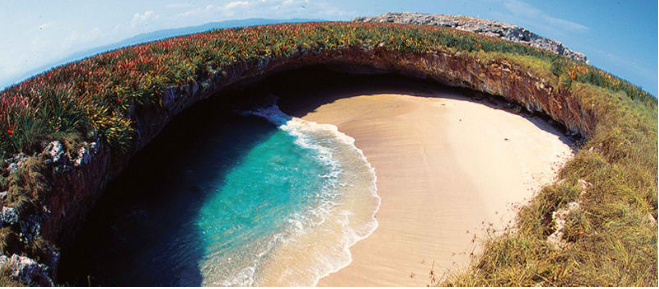Located in the mouth of Banderas Bay are the beautiful Las Marietas
Islands, about 22 nautical miles west of Puerto Vallarta, Mexico. Formed
by volcanic activity over thousands of years, the islands are a
nationally protected bird sanctuary, also providing shelter for
countless marine species.
After years of scientific research and an intensive effort to legally
protect this archipelago, first championed by Jacques Cousteau, it was
finally pronounced a national park, Parque Nacional Islas Marietas, in 2005. The park spans almost 1,400 hectares.
On one of the islands is Playa de Amor, more commonly known as Hidden Beach.
To reach this secluded paradise, visitors need to swim through a short
tunnel, opening up into the stunning beach seen here. There are a number
of tour operators providing day trips to this ecological marvel.
Below you will find images of Hidden Beach.
The Ecological Diversity of the Marieta Islands
Las Marietas are an important area for nesting, refuge, reproduction
and migration of at least 92 species of aquatic and sub-aquatic birds,
native and migratory. The islands shelter the biggest colony and
breeding ground in Mexico for the white-capped marine swallow (Anöus stolidus) and the band-tailed swallow (Sterna anaethetus), as well as the largest population in the Pacific Ocean of the curious laughing sea gull (Larus atricilla).
It is thought that these islands are home to the largest population
in the world of the pájaro bobo café, a penguin species, sula
Leucogaster, the latest census estimating them at more than 35,000
individuals. Along with those, you may also enjoy the beautiful
blue-footed booby, who also nest in the Galapagos Islands.
According to the last scientific study of the Las Marietas, it was
determined that the islands possess the greatest abundance of reef fish,
home to 103 of the 159 registered species in Banderas Bay, as well as
diverse species of coral. During the winter whales use the islands as a
natural refuge from predators and ocean currents.






